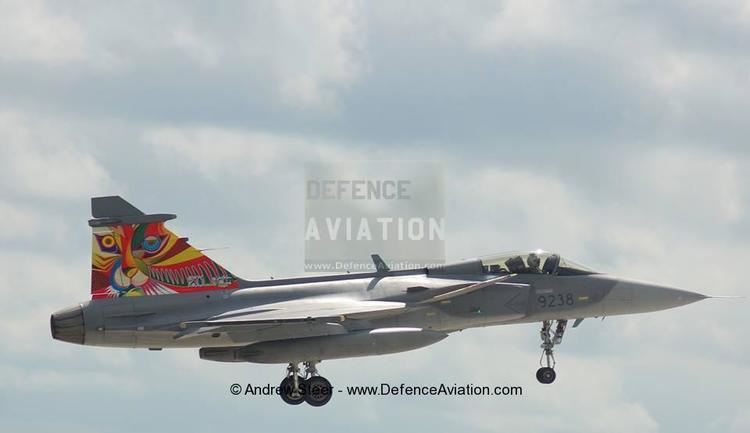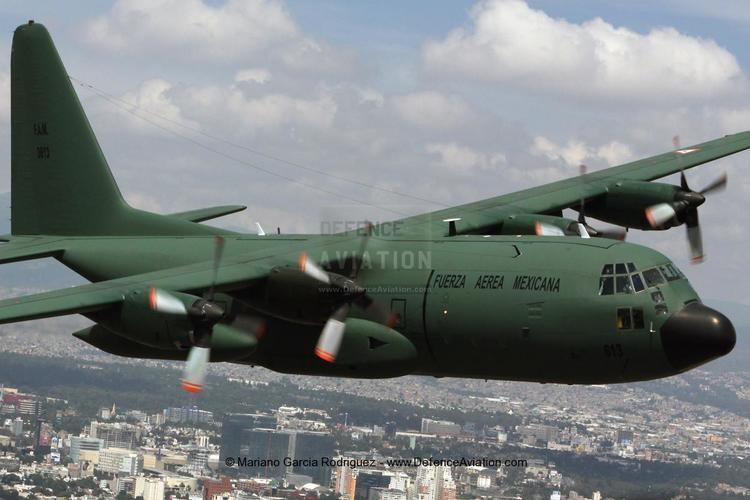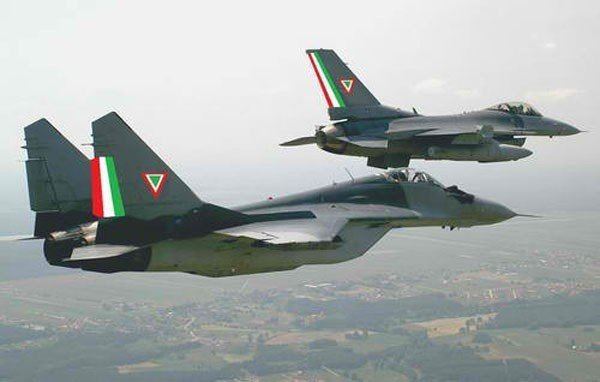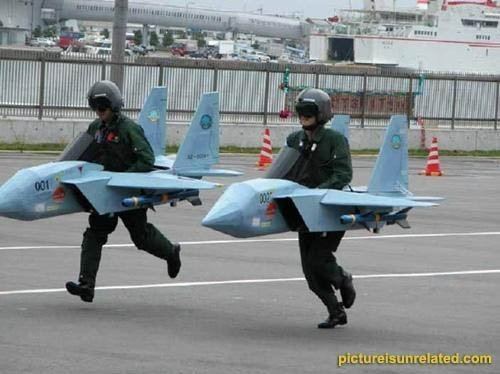Country Mexico Founder Alberto Salinas Carranza Bomber Beechcraft T-6 Texan II | Motto "Honor, Valor & Loyalty" Founded 19 June 1913 | |
 | ||
Allegiance Secretariat of National Defense Type Air force and army aviation unit Size 11,770 personnelApprox. 363 aircraft. Nickname(s) "FAM", "Fuerza Aérea Mexicana" Transports Eurocopter EC725, Mil Mi-17, Mil Mi-8, IAI Arava, Lockheed C-130 Hercules, Boeing 787 Dreamliner, Boeing 757 Similar Mexican Army, Mexican Navy, Mexican Armed Forces, Argentine Air Force, Brigada de Fusileros Paracaidistas | ||
The Mexican Air Force (FAM; Spanish: Fuerza Aérea Mexicana) is the primary aerial warfare service branch of the Mexican Armed Forces. It is a component of the Mexican Army and depends on the National Defense Secretariat (SEDENA). Since November 2013, its commander is Gen. Carlos Antonio Rodríguez Munguía.
Contents
- Mexican Revolution
- Other rebellions
- World War II
- Cold War era
- Chiapas conflict
- Recent times
- Structure
- Air bases
- Ranks
- Pilot selection and training
- Air Force Academy
- Recruitment
- Fleet
- References

Mexican Revolution

The official predecessor of the Air Force was the Army's Auxiliary Aerial Militia Squadron (Escuadrilla Aérea de la Milicia Auxiliar del Ejército), created during the Mexican Revolution in April 1913 by the Secretary of War and Navy General Manuel Mondragón, who authorized pilots Miguel Lebrija and Juan Guillermo Villasana to bomb targets on Campo de Balbuena, in Mexico City.

On February 5, 1915, the leader of the Constitutionalist Army, Venustiano Carranza, founded the Arma de Aviación Militar (Military Aviation Arm), which would become the current air force. Its first commander was Lt. Alberto Salinas Carranza.
Other rebellions
In 1925, due to the shortage of airplanes caused by World War I, Mexico set up the National Aviation Workshops (TNCA) to design and build its own airplanes and aeroengines. When U.S. Colonel Ralph O'Neill was hired to revamp the Mexican Air Force in 1920, he reported to General Plutarco Elías Calles that most of the aircraft available had to be replaced since they were obsolete and worn away. Therefore, Mexico acquired some British Avro 504K and Avro 504J airplanes, which later would be made in Mexico with the name Avro Anáhuac. In addition, in May 1920, Mexico acquired thirteen twin-engine bombers Farman F.50.

Between the years 1923 and 1929, Mexico found itself immersed in a wave of violent territorial, religious and military armed rebellions, which required the Air Force to quickly deploy its forces and provide air support wherever the federal army requested them. Some of these conflicts, that were decided mostly by the assertive use of the Air Force, are mentioned below.

On December 7, 1923, former President Adolfo de la Huerta launched a military coup (delahuertista rebellion) against the government of President Álvaro Obregón. The situation was extremely critical, because along with de la Huerta, about 60% of the army revolted, including various high-ranking generals across the country. The power tilted back in favor of the federal forces when the United States agreed to furnish the Mexican government with a fleet of new de Havilland DH-4B aircraft equipped with the Liberty motor, armed with Lewis and Vickers machine guns and able to carry bombs. The military coup was then suffocated by February 1924.
A territorial war was that of the Sonora Yaqui Indians who demanded by force that previous territorial treaties were implemented. The conflict lasted from 1926 to 1927, and it came to an end when a new treaty was implemented.
When President Plutarco Elías Calles pushed for the creation of the 'Mexican Apostolic Catholic Church', independent of Rome, it unleashed a widespread religious war known as the Cristero War. This long civil war lasted from 1926 to 1929.
In May 1927, while General Obregón seemed keen to impose the presidency to General Calles, General Arnulfo R. Gómez launched a military coup against both Obregón and Calles. His command posts were located in the cities of Puebla and Veracruz, where he led approximately 200 federal deserters, ammunition and weapons. The air force played a key role in their defeat.
Then, on March 3, 1929, a serious military coup took place, led by General José Gonzalo Escobar and heeded by various other generals. In these days, the air force's remaining airplanes consisted of worn and shot Bristol F.2 Fighter, Bristol Boarhound, de Havilland DH-4B and Douglas O-2C, a force that was not suitable to defeat Escobar's power. In this context, the Mexican government convinced the U.S. government to promote the peace south of its border and quickly make available twelve new OU-2M Corsair with the 400 hp Wasp engine, nine Douglas O-2M, four Stearman C3B and six Waco Taper Wings. Only two weeks after making the request, the U.S. government agreed, and several Mexican pilots travelled to Brownsville, Texas, and New York to pick up the new aircraft. The key victory was decided in late March 1929 at the Battle of Jiménez, Chihuahua, where after several days of air raids, Escobar was defeated by General Calles, taking about 6000 prisoners. This rebellion was quite serious, since a third of the officials and nearly 30,000 soldiers rebelled; in two months, more than 2000 men had been killed.
In May 1938, the Governor of San Luis Potosí, General Saturnino Cedillo, declared himself in rebellion and President Lázaro Cárdenas travelled there to personally mount the campaign against the revolt. The Air Force organized a mixed fleet of 17 aircraft that included some new V-99M Corsair, engaging the enemy assertively when spotted. Cedillo quickly realized he had no chance in open fields against the air force and ran to the Huasteca Hills, where his men dispersed, abandoning him.
With the imminent collapse of the Spanish Republic in 1939, the Mexican government took delivery of military aircraft destined for the Republic, strengthening its arsenal.
World War II
The Escuadrón 201, a P-47D fighter squadron of the Fuerza Aérea Expedicionaria Mexicana (Mexican Expeditionary Air Force), served in the Pacific War against the Empire of Japan during World War II. It consisted of 25 aircraft and had 300 airmen and supporting staff. The 201st Squadron, completed 96 combat missions over the Philippines (Battle of Luzon) and Formosa (Taiwan). It is the only unit of the Mexican armed forces ever to see overseas combat.
Cold War era
The first jet aircraft operated by the Mexican Air Force was the subsonic de Havilland Vampire Mk.I. Mexico received 17 Vampires during late 1960 and early 1961. This jet was nicknamed "The Flying Avocado" by Mexican flight crews due to the ovoid shape of its fuselage and the dark green night camouflage adopted by its first units. The Vampires were not popular with Mexican fighter pilots because of its lack of ejection seats. The FAM finally retired them in 1970.
The Mexican Vampires were initially complemented by 15 Lockheed T-33 Shooting Star subsonic fighter aircraft received also in late 1961. Because of its more modern design, an ejection seat system and several other attributes, the T-33 was well liked by most FAM pilots and became a huge success as a patrol and Interceptor aircraft. During the seventies and early eighties an additional 20 or more T-33s were procured by the FAM to replace aircraft lost in accidents and to increase the size of the fleet after the retirement of the Vampires.
In 1982, the FAM received 12 Northrop F-5E/F Tiger II jets (10 F-5Es and 2 F-5Fs). The F-5 gave Mexico its first supersonic platform and saw the formation of Air Squadron 401. Since the eighties the F-5 became the main Mexican fighter jet while the remaining operational T-33s were still used for subsonic support and light Attack roles afterwards.
In 1983 one F-5E was lost in an accident that occurred during a target practice exercise in the state of Chihuahua.
Chiapas conflict
On January 1, 1994, the day the North American Free Trade Agreement (NAFTA) came into effect, hundreds of guerrillas from the previously unknown Zapatista Army of National Liberation (EZLN) occupied several towns and cities in the southern state of Chiapas.
The FAM was mobilized to support Army units, sending almost every available Helicopter to the territory of operations. Units involved included the recently formed 214th and 215th Special Operations Squadrons, equipped with a mix of Bell 212 assault- and MD.530F scout helicopters. Up to 40 helicopters were deployed to support an initial deployment of 10,000 ground troops.
Bell 212s were armed in two configurations: for fire support with twin MAG 7.62-mm gun pods and cabin-mounted GPMGs; or as gunship, with LAU-32 70-mm rocket launchers, a twin MAG gun-pod and cabin mounted MAG GPMGs.
Pumas, Bell 205s, 206s and 212s from the 209th were also deployed, however, FAM's helicopter assets were scarce and the Mexican Army had to rely on almost every other government agency's helicopters for general support tasks. Almost any flyable aircraft from the National Attorney's Office (PGR) was also deployed, including Bell 206s and 212s, as well as the Navy's recently acquired Mi-8MTV-1s. Eventually the Army deployed some 70,000 ground troops and air support proved to be insufficient; hence the decision was taken to considerably expand the FAM's helicopter fleet.
By December 1994, FAM had bought additional 12 armed MD.530MG 'Defender' and four UH-60L Blackhawk helicopters, which it grouped into the 216th Special Operations Squadron. This unit was the spearhead of operation "Arco Iris" (Rainbow) to re-take several towns that had fallen under rebel control in January 1994. The new militarized Defenders came armed with M2AC machine-guns and LAU-68A 70-mm rocket launchers. Three additional units were ordered in 1996 and delivered as attrition replacements in March 1998. Black Hawks wore 1191 to 1194 serials and are being used for special operations.
Although the FAM received 18 surplus Bell 206s from the Attorney General's office (PGR) in the mid-1990s, the main need identified by the FAM High Command was for a new fleet of Transport helicopters that would allow it to support the Army with an adequate airlift capability.
Recent times
On 16 September 1995, after more than 30 yearly military parade flights without incidents, an F-5E collided in mid-air with three Lockheed T-33s during the parade for the Independence of Mexico. All aircraft were lost and a total of 10 deaths occurred. Since then, for safety reasons, military parade flyovers in Mexico have been smaller in participation.
In 2007, after more than 45 years in service, the last operational T-33s were retired. In 2012, the F-5 fighter jets had their 30th anniversary in Mexican Air Force service. The Mexican Air Force has only three F-5 Tigers operational for combat-ready service. It plans to continue operating the F-5 for the foreseeable future.
Because of the ongoing Mexican Drug War, increasing importance has been placed on acquiring airborne surveillance platforms, UAVs, light attack aircraft, helicopters and rapid troop transports. On 18 January 2017, a Mexican Air Force PC-7 operating near Jiquilipas, Chiapas crashed, killing both of the crew.
Structure
A national commander under the orders of the Secretary of National Defense is in charge of the Mexican Air Force. The second-in-command is the Air Force Chief of Staff, who supervises a Deputy Chief of Operations and a Deputy Chief of Management. The Air Force divides the country's territory into four regions: Northwestern (Mexicali, Baja California), Northeastern (Chihuahua, Chihuahua), Central (Mexico City) and Southeastern (Tuxtla Gutiérrez, Chiapas); each region is commanded by a general. The regional headquarters are in charge of 18 air bases across the country:
Northwest Air Region
Northeast Air Region
Air bases
1st Military Air Station – Mexico City International Airport
1st Military Air Base – Santa Lucia, State of Mexico
2nd Military Air Base – Ixtepec, Oaxaca
3rd Military Air Base – El Cipres, Baja California
4th Military Air Base – Cozumel, Quintana Roo
5th Military Air Base – Zapopan, Jalisco
6th Military Air Base – Teran, Chiapas
7th Military Air Base – Pie de la Cuesta, Guerrero
8th Military Air Base – Mérida, Yucatán
9th Military Air Base – La Paz, Baja California Sur
10th Military Air Base – Culiacán, Sinaloa
11th Military Air Base – Santa Gertrudis, Chihuahua
13th Military Air Base – Chihuahua, Chihuahua
14th Military Air Base – Monterrey, Nuevo Leon
15th Military Air Base – Oaxaca, Oaxaca
18th Military Air Base – Hermosillo, Sonora
Ranks
Air Force ranks are the same as in Mexico's Army, with the exception of generals.
Pilot selection and training
The FAM offers higher education, middle education, technical training, tactical training and specialized technical training in its various campuses:
Air Force Academy
Since the National School of Aviation was opened in 1915, it took different names over the years until finally, in 1959 it joined the military school of meteorology, mechanics and aviation specialists, forming the leading campus in military aviation education: 'El Colegio del Aire' (Air Force Academy), which since September 9, 1959, has guided the formation of Air Force officers. The Air Force Academy is an all academic institution of the Mexican Air Force and comprises four schools: 'Military Aviation School', 'Maintenance and Supply Military School', 'Air Force Military Specialist School', and the 'Military Troops' Air Force Speciaslist School'.
Admission to the Air Force is through the mechanism of military recruitment that takes place every year at The Ministry of Defense. The FAM currently offers tertiary level studies – highlighting that of Military Pilot, which spans 4 years at the facilities of the Air Force Academy located on the Military Air Base No. 5 in Zapopan, Jalisco.
The subjects taught in pilot training include: tactics of the branches of aviation, general aviation tactics, meteorology, air navigation, air traffic control, radio communications and culture in general, along with approximately 250 hours of flight. During the first year, the training is theoretical. During the second year, Beechcraft Bonanza aircraft are used for flight instruction. During the third the cadets are trained Aermacchi SF260EU for aerobatics, and later on Pilatus PC-7 for advanced flight tactics, including combat. Within each of these stages, the cadets are trained in aerial acrobatics, stage tactical instrument flight, visual flying rules (VFR), radio operations, among others, which increase in complexity as the cadets' training progresses. The first female aviator to graduate as a pilot in the history of FAM, Andrea Cruz, became a cadet at the Military Aviation School in 2007.
Military School of Air Force Specialist offers a comprehensive scholarship lasting three years for officer training meteorologists and flight control, obtaining at the graduate level of lieutenant. His duties are to provide meteorological information and control of military or civil aircraft.
Military School of special troops of the Air Force is a establishment of military education that has as its mission to train sergeants in seconds aviation maintenance, supply lines, electronic aviation and military aviation. The school is located in the St. Lucía military base.
In this school, officers are trained as aviation maintenance specialists, aviation electronics specialists, weapons and air supply lines.
Recruitment
To enter any of the campuses of the Air Force, SEDENA convenes a competitive entrance examination which is held each year. The requirements are:
In order to be admitted to any school of the Mexican Air Force Academy mentioned above, the applicant should also perform the following tests: physical, medical, cultural, and aviation psychology. In some cases, the psychological aeromedical 2nd level examination may also be required.
Fleet
Mexico has the second largest defense budget in Latin America, spending about 0.5% GDP on its military. The Air Force fleet is estimated to be at 241 fixed-wing aircraft and 187 helicopters:
